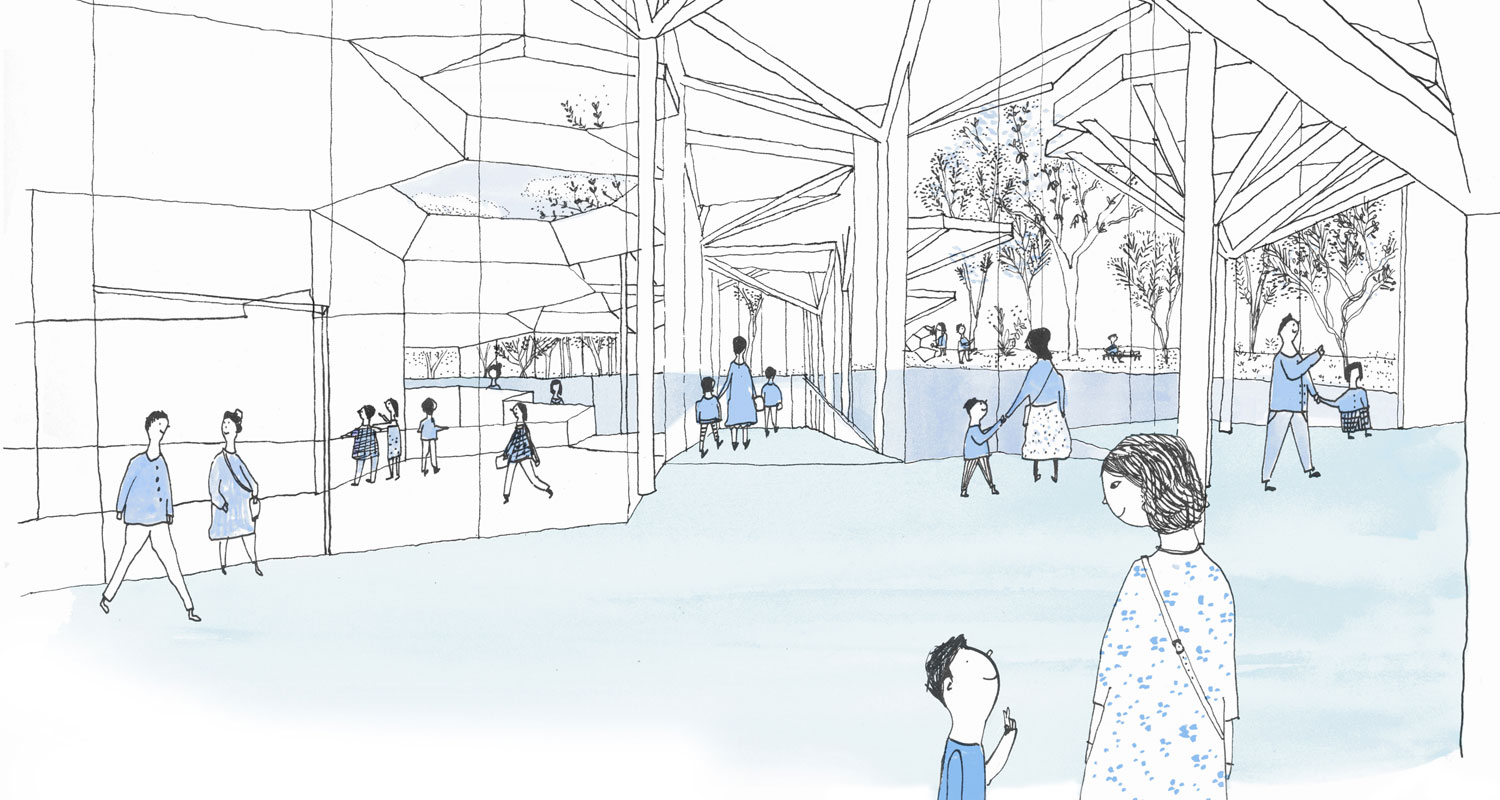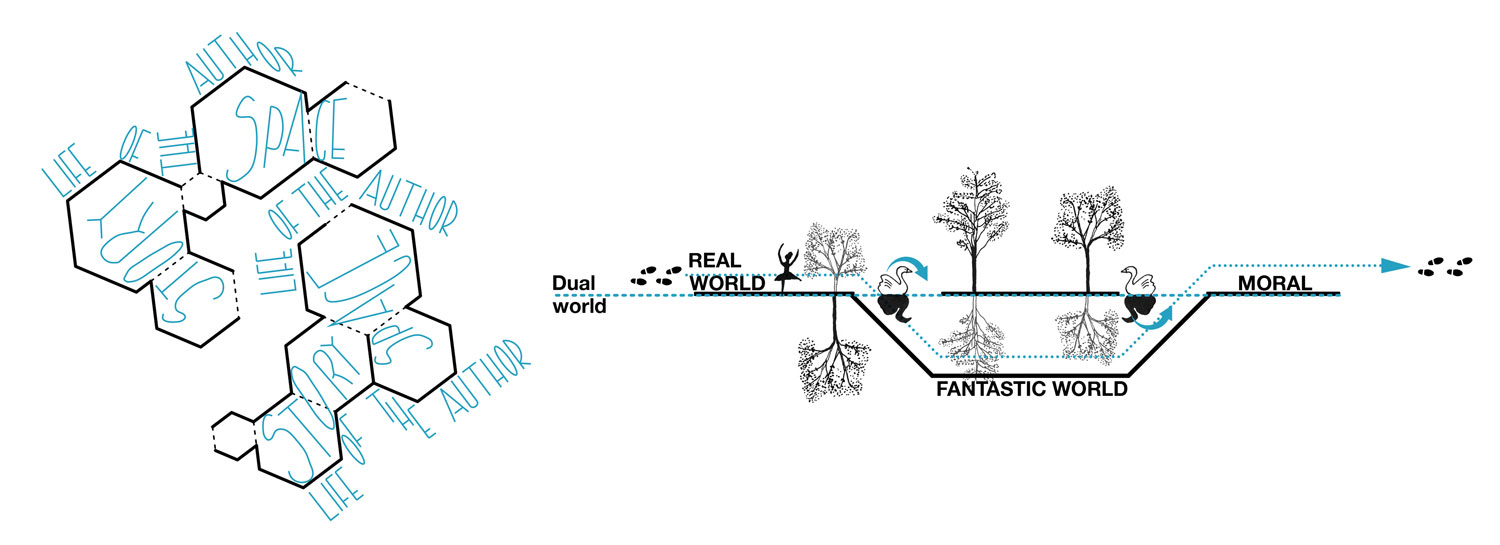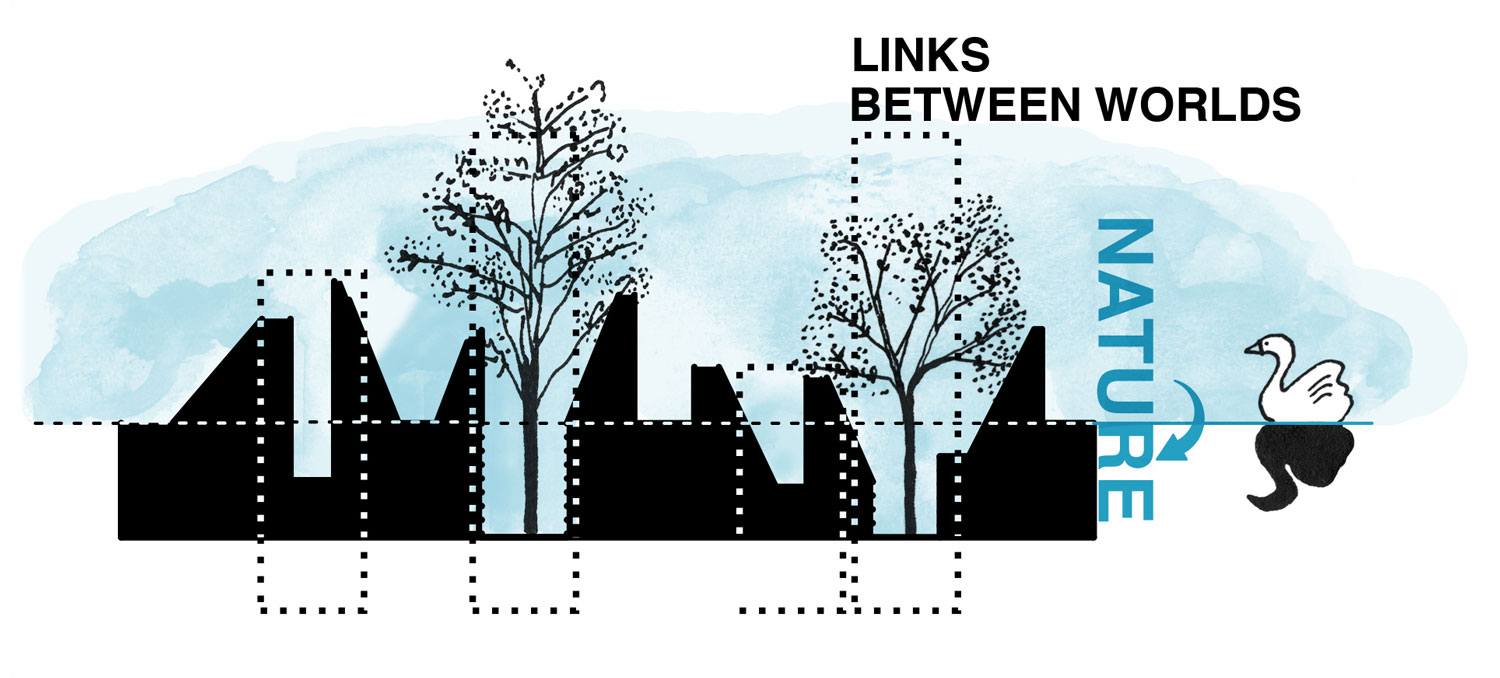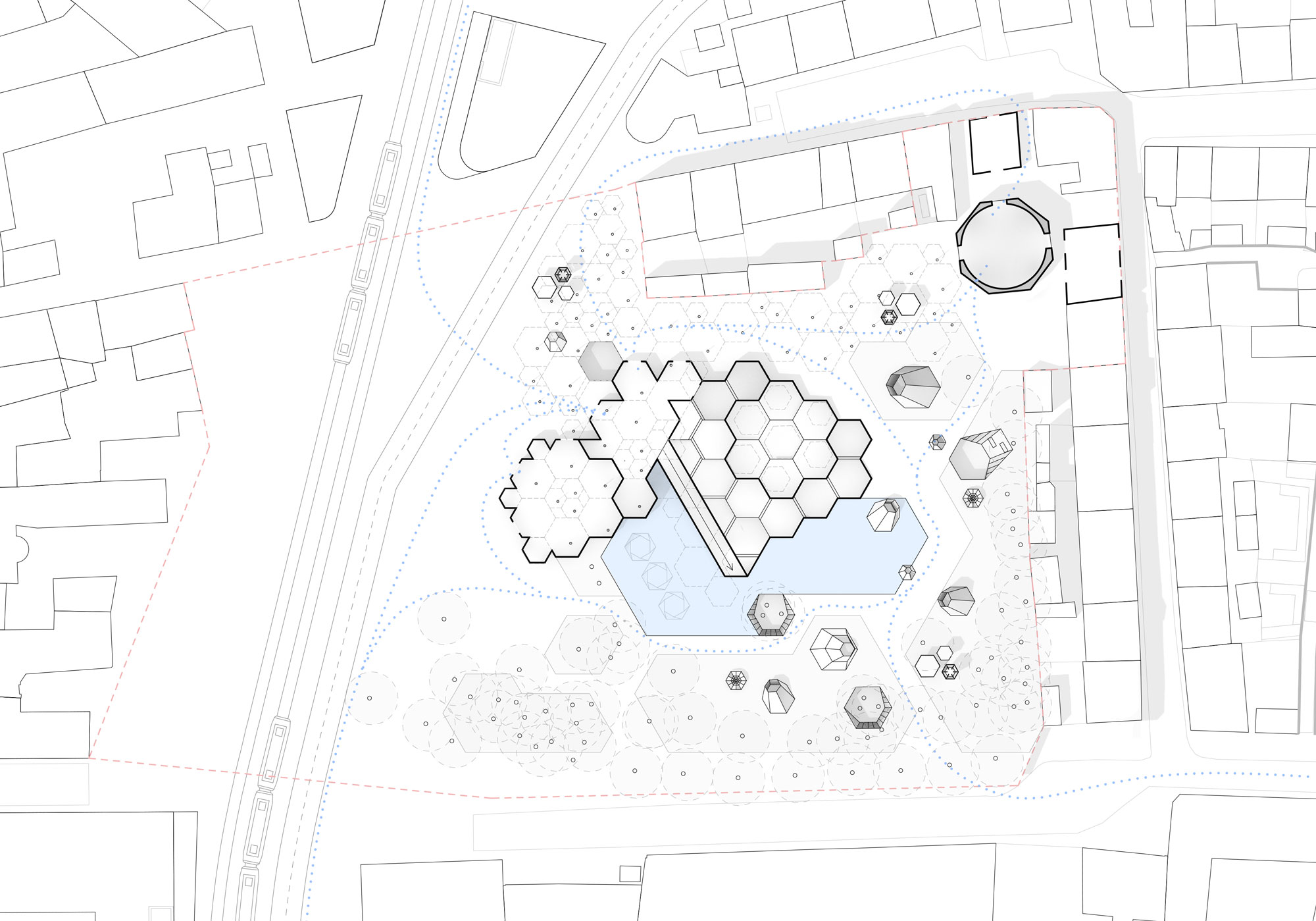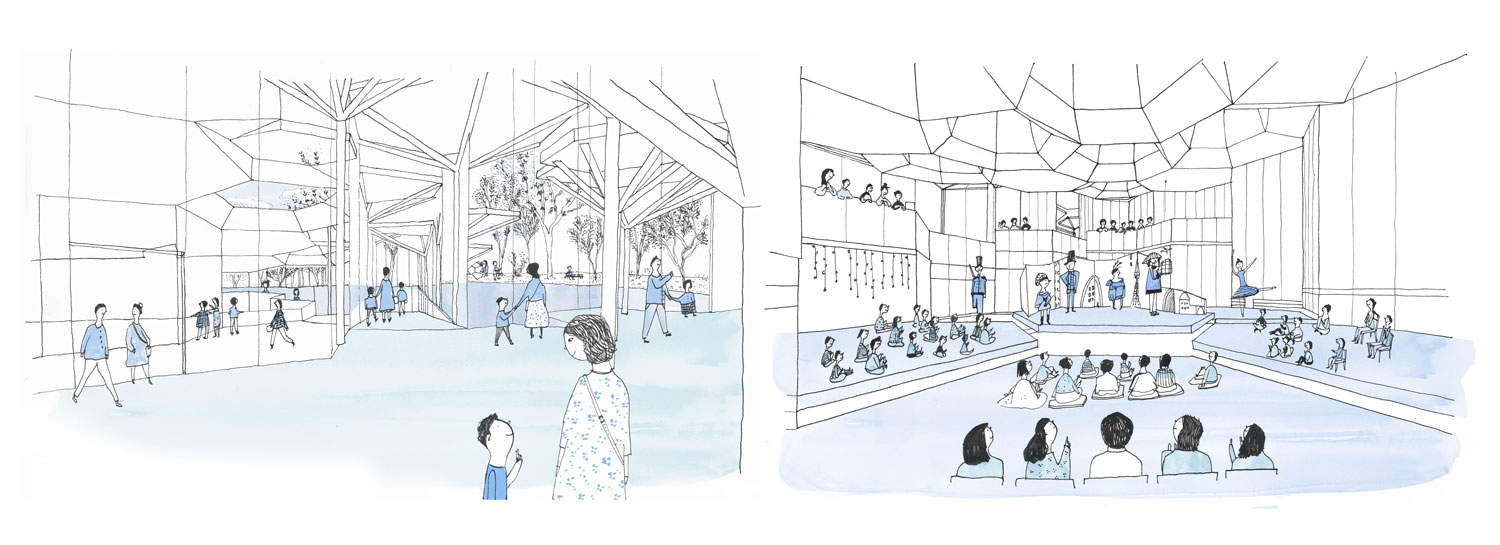1158-KKT-DK-2013
Client: Unknown
Status: Competition (2013)
Location: Odense, Denmark
Climate: Continental, Temperate
Material: Undefined
Environments: Urban, Park
Visualizer: Studio
Scale: Medium
Types: Cultural, Cultural center
The conceptual definition of the project is based on a spatial interpretation of the structure of Andersen’s fairy tales, which leads to the consideration of a dual world: the real and the fantastic. The ‘real world’ is predominantly situated at the surface-level of the site, and is represented by existing buildings, Lotze’s Garden and the entrance to the ‘fairy tales world’. On the other hand, the ‘fantastic world’, is located underground and mainly integrated by the exhibition spaces.
As in Andersen’s stories, ‘nature’ constitutes the interface between these two worlds: vegetation, water and light are the key elements shaping the visitors’ experience. Obtaining inspiration from fairy tales such as ‘The Little Mermaid’ or ‘The Ugly Duckling’, water is considered to be the gateway to the fantastic world. A smooth ramp piercing a shallow lake transports visitors to a world of magic and exploration.
Nevertheless, during their journey through this seemingly isolated world, visitors are continuously aware of the real world above them, albeit from a different perspective, through what the project named as the Artifacts. After going through the fantastic world, visitors finally experience what the project refers to as the ‘Moral Space’, which returns them back to reality while revealing new knowledge about some aspect of human complexity.
